Homo Sapiens, Evolution, Money & Bitcoin
Homo Sapiens, Evolution, Money & Bitcoin
By Alex Svetski
Posted March 28, 2018
How a strange species of ape went from Barter to Bitcoin. An Essay.
Preface
I started writing this damn article about 6mths ago…or maybe longer — I can’t even remember now. It’s been sitting there with my other 50 unfinished / partly written articles which I keep saying “I’ll find the time to finish soon”..
The information here has formed the basis of alot of my arguments in the space, and also the basis of a few talks I’ve given, including one really rough presentation I held in Australia a few months ago that was recorded (linked at the end).
My aim is to use history, anthropology, communication, evolution and more to explore what money is, what Bitcoin is, how they’ve evolved, what’s different this time & why this innovation is so important.
Although I’ve picked up information from the thousands of books, videos, essays, articles and blogs I’ve read over the years, a HUGE thankyou goes to Yuval Noah Harari, Andreas M. Antonopoulos and Naval Ravikant for being big inspirations. I recommend you find out who each of them are..asap.
So now…well…I’m going to actually try & finish it. Or at least make it good enough to release…
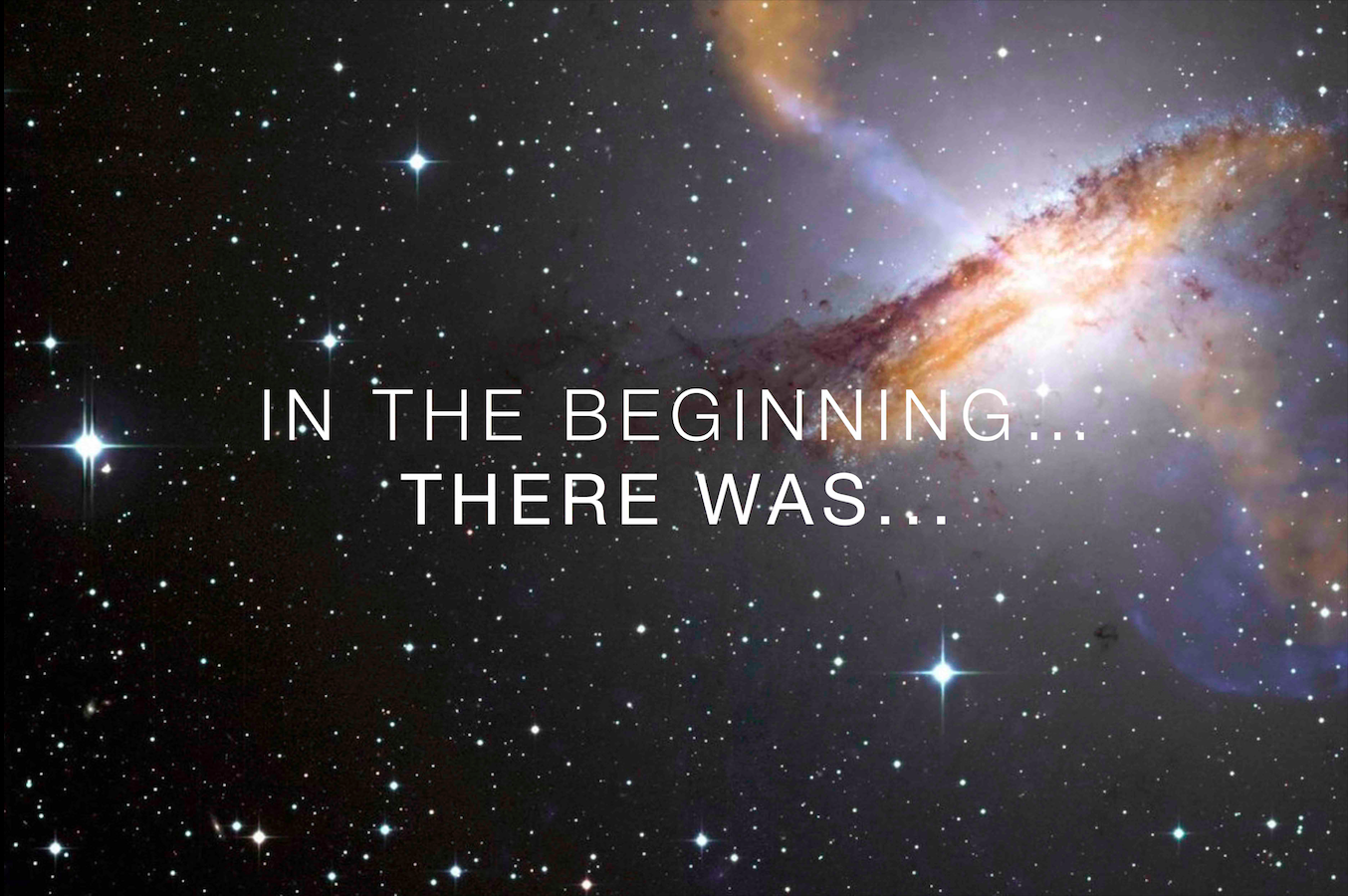
In the beginning…there was Bitcoin
Bitcoin & “Blockchain” development commenced roughly 70,000yrs ago — when homo sapiens as a species transcended their biological limits. It’s a story that has its roots in the evolution of humanity. Humans have been on the planet for over 2m years.
Homo-Sapiens, as a species of human have only been around for about 150,000.
70,000yrs ago, something happened — it’s linked to the activation of our prefrontal cortex, the shrinking of our digestive system and a few other things, and although nobody really knows “how” it happened, it resulted in us moving from the middle of the food chain, to the top of the food chain — very quickly. And this is where the age of “history” begins, which for humans and the world, changed everything.
But…before we explore what changed, let’s get some context.
Dunbar’s Number
Robin Dunbar was a British Anthropologist who spent years studying the average social group size and brain function of humans & primates throughout history.
His findings led him to posit that: The human cognitive processing system can tolerate a maximum of 150 “friends”, or stable social relationships.
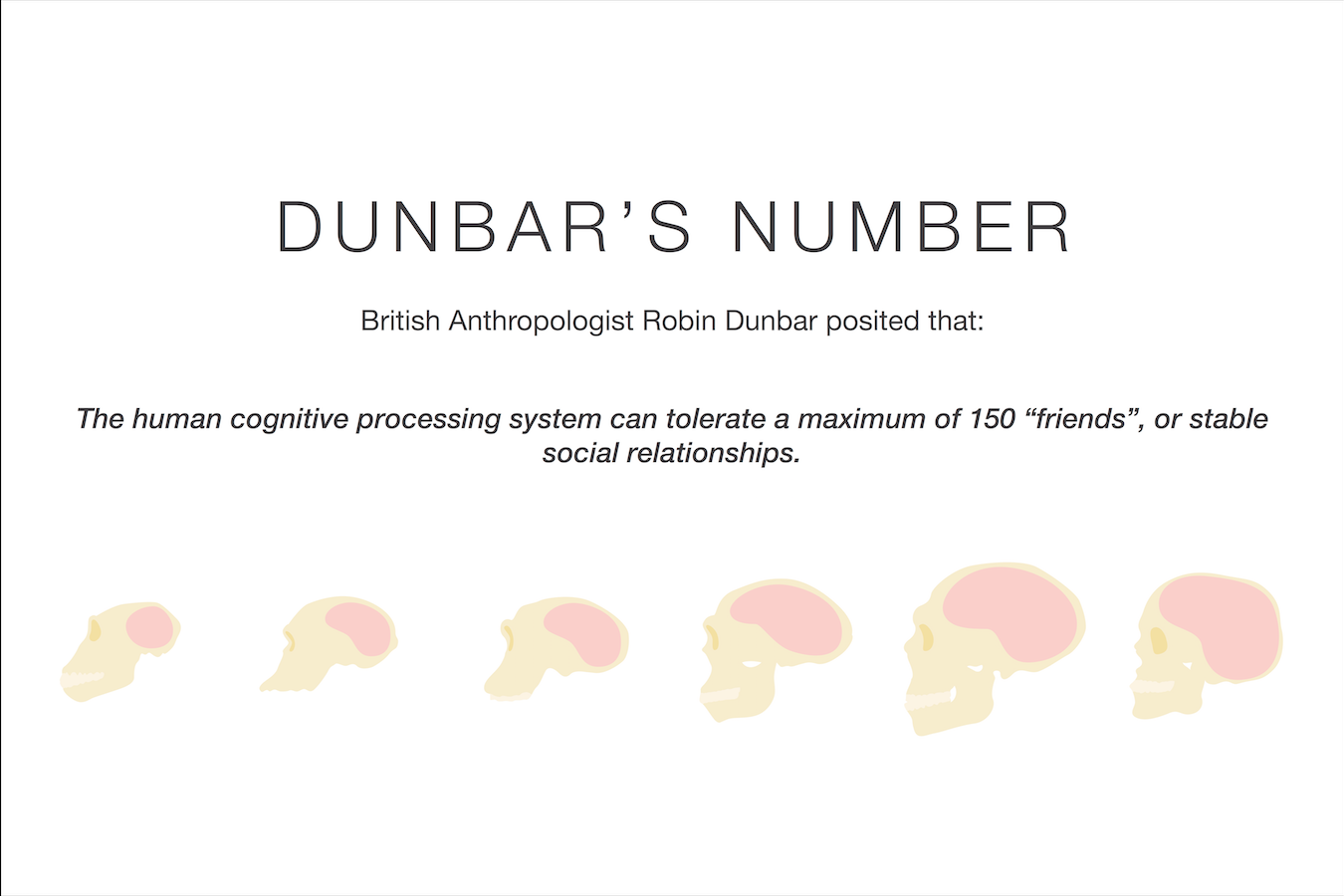
This 150 has come to be known as “Dunbar’s Number” and has held roughly true over the millennia, across all species of human & primate.
It’s considered an evolutionary biological limit that we homo-sapiens still have to this day.
BUT…
It was the ability to cooperate in groups beyond this number that changed everything 70,000yrs ago (the dawn of History)..
How?
Communication
Communication changes everything. But it’s not just any form of communication.
Animals, mammals, insects, etc all communicate in their own ways — and as a result build tribes, colonies, packs, etc.
In fact, most are way better at organising & building complex cooperative colonies than humans are (eg; ants) — but — these groupings & their communication is purely biological. Homo Sapiens evolved beyond ALL other species (including humans) because we were somehow able to communicate on a higher level, transcending our biological constraints.
There are 2 parts to this; one the foundation, the second; the derivative & key to it all.
Part 1: Complex Language
“Language may have arisen as a “cheap” means of social grooming, allowing early humans to maintain social cohesion efficiently. Without language, Dunbar speculates, humans would have to expend nearly half their time on social grooming, which would have made productive, cooperative effort nearly impossible. Language may have allowed societies to remain cohesive, while reducing the need for physical and social intimacy.” Source: Wikipedia: Dunbar’s Number Complex language was something unique to the way our brain evolved, (ie; neocortex & prefrontal cortex).
It gave us the time (physically) and space, cognitively, to build the second layer:
Part 2: “Shared Fictions”
We are the ONLY species that is able to communicate about, share & relate to things that don’t actually exist.
 Monkey who just stole a banana…and is on the run…yep…Monkeys can Lie.
Monkey who just stole a banana…and is on the run…yep…Monkeys can Lie.
They can say there is an eagle in the sky to trick their fellow monkey into running, so he gets all the bananas to himself.
Monkeys can also warn of danger, ie; “there is a Lion at the River”.
Only Homo-Sapiens, on the other hand can say: “The Lion is the Spirit ancestor of our people”.
Only Homo-Sapiens — who are from different parts of the world, don’t know each other, have never met, and have no biological reason to trust each other — can strike up a conversation, build rapport and build trust simply because they are Italian, or Chinese, or some other “fictitious” Nationality.
Only Homo Sapiens can use that same reason to band together & build the Pyramids, or blow each other up “in the name of our country” like we did in WW1, WW2 or any other war for that matter..
Shared fictions are languages in and of themselves, and over the millennia there have been many:
- Caste’s
- Races
- Kings
- Gods
- Religions
- Nations
- Laws
- Corporations
- Money
All of these are designed to facilitate cooperation, coordination on a broader level, helping to abstract exchange and allowing for a more complex society to grow and evolve.
One of the earliest “shared fictions” was money, and it still exists today because of how fundamentally important it is for society to function.
Money & Communication
Money, at it’s very basic level, is a form of communication.
Money is a shared fiction. It’s an abstraction that we’ve all agreed represents value.
The “form” of money has evolved over the years. From spices, to shells, to coins, to gold, to paper, to plastic, and now native digital currencies.
Money is one of the only forms of communication (shared fiction) that has stood the test of time & managed to transcend the borders & barriers all other shared fictions have been restricted by.
Not even religion can come close to the power of money.
Why?
Because of what it represents:
Value & Exchange
At the very foundation of Society and its ability to grow & function is one key ingredient: VALUE Furthermore, the ability to exchange value is what makes society run.
When we cooperate, we are doing “work”, which has some form of “value” and in all our contributions and interactions, we have exchanges of this value. When you extrapolate that out in layers of complexity, you create societies that are able to exceed Dunbar’s number by orders of magnitude.
It’s also important to note that as a society increases in complexity, value will continue to abstract in order to lower the friction of exchange.
THIS is why money is so important.
Value is subjective and can come in many forms, but money is an objective tool that gives us an opportunity to represent / quantify it.
Money’s Evolution
(Grossly simplified for this essay) Over the centuries, money has come in many, many forms.
We went from barter, to commodity money like cows & spices, to initial abstractions like shells to better abstractions like metals such as bronze, then silver then gold.
About 3000–5000yrs ago, we entered the period of layer 2 abstractions where “trust” was introduced to help facilitate better transactions & exchange, ie; coins were created with the stamp of approval by an emperor/authority.
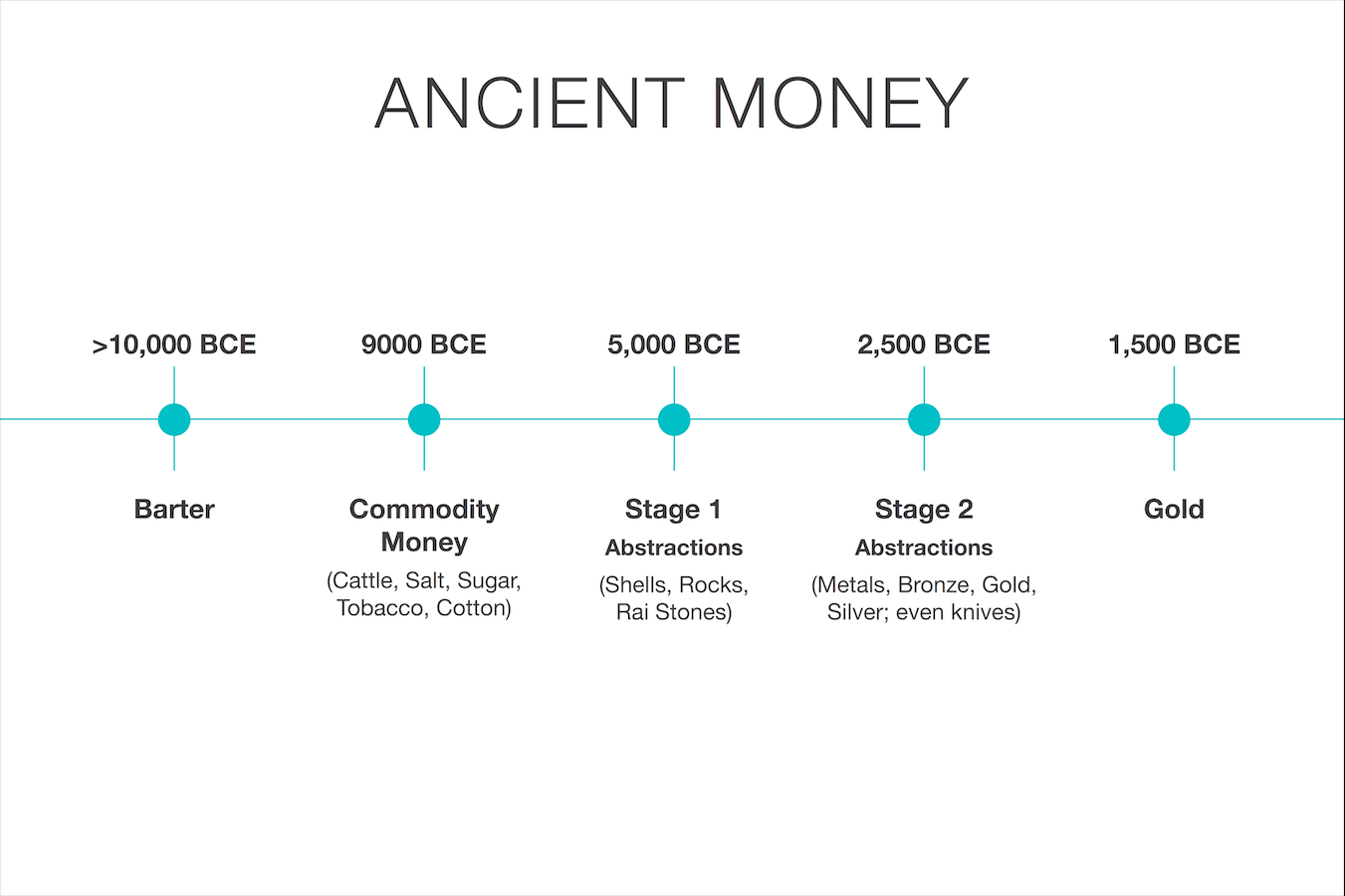
This model persisted (in many variants) over the millenia, in & amongst multiple barter, gold, hyper inflationary coinage era’s, etc (thankyou, Nero, for one of the first big ones) until the next major abstraction; ie; Paper or Promissory notes.
It was popularised by the Florentine banking families during the renaissance, because it was easier to carry a note that promised the redemption of an amount of gold, than having to carry the gold around.
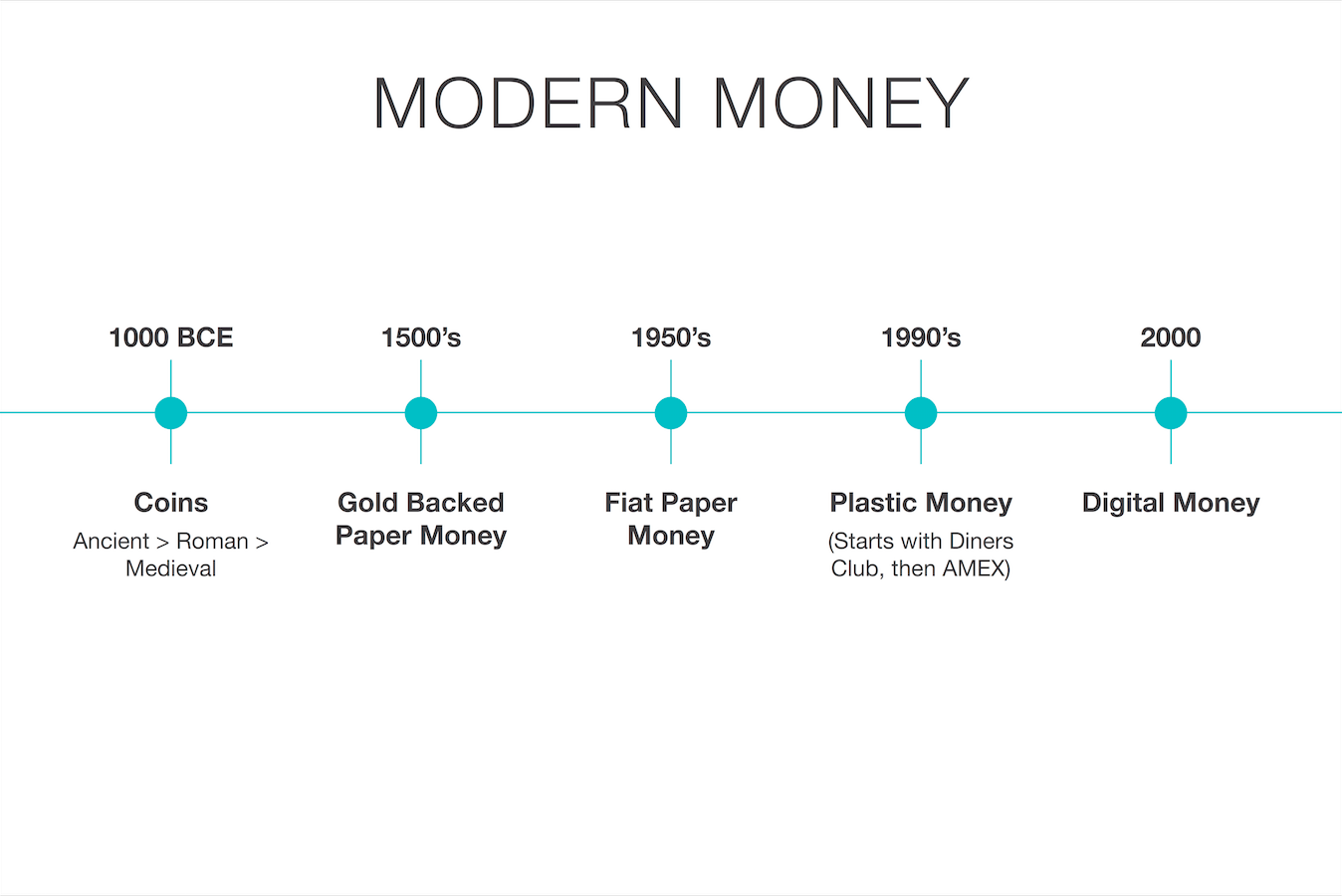
This was the defining model (in and amongst periods of gold standards, etc) for 500yrs, until the promissory notes transformed into our current era of “fiat currency”, ie; a currency that is backed by nothing other than “trust in the state”, or “trust in the issuer”.
This fiat currency model has had 3 iterations so far:
- Paper
- Plastic
- The Digital Veneer (now)
And it has reigned supreme..until January of 2009 — when Satoshi Nakamoto launched Bitcoin. And the timing…could not have been better.
Attributes of Money
Before we define the “money we need”, lets review the attributes of money.
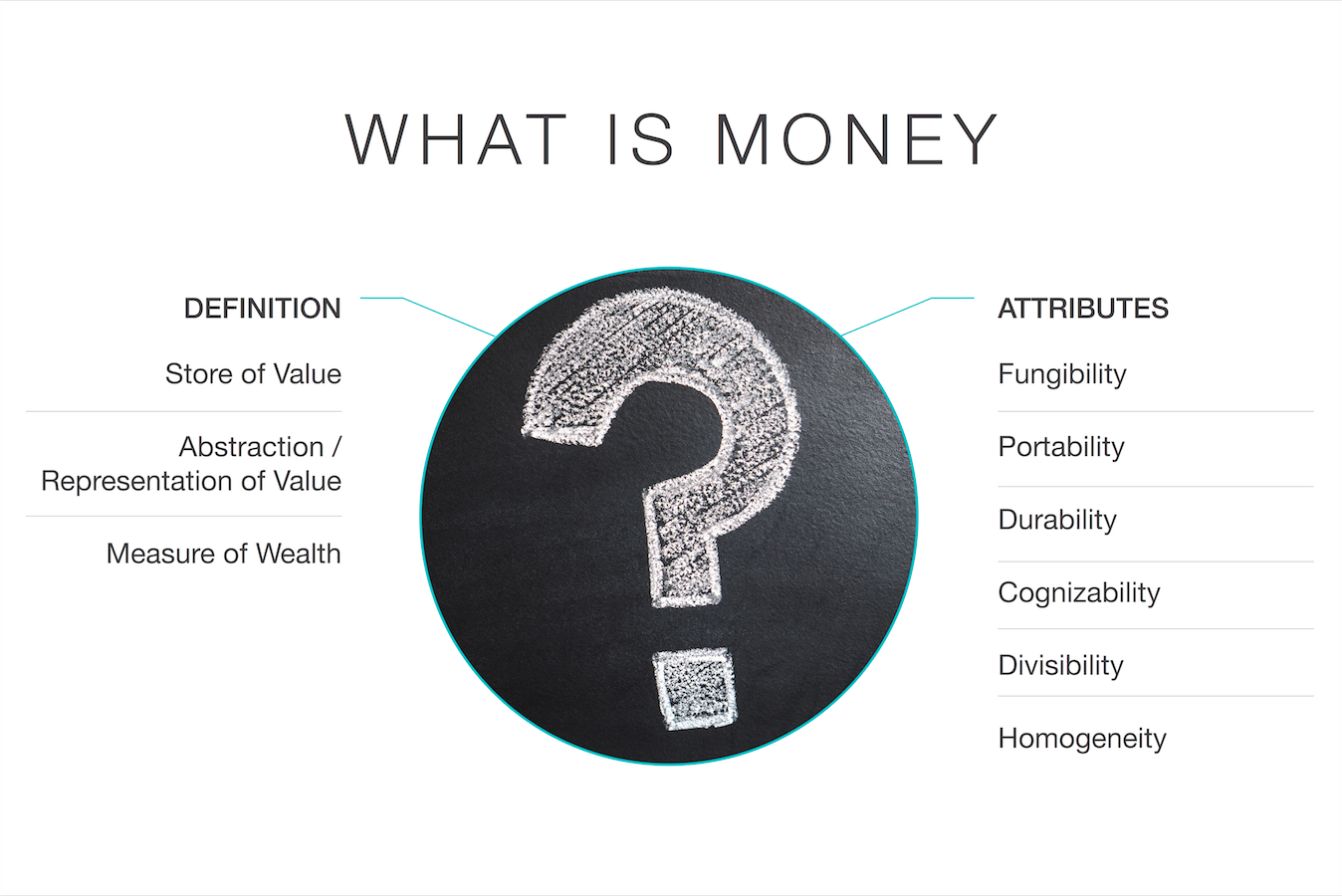
With each abstraction, we were able to add better attributes to money.
But with each layer of of abstraction, we increased the dependence on trust.
The more attributes we added, the more the pillar of trust was shrouded in power, secrecy & the few. And this is why we need a new for of money.
The Money We NEED?
What’s the ideal type of money / value storage for a world that:
- Is becoming increasingly interconnected?
- Is becoming increasingly complex?
- Requires better forms of exchange, that are faster & more transparent?
- Needs a more robust, anti-fragile, trustless form of value abstraction?
- Is moving quickly to one where borders mean less than they used to, and where the language barriers are being broken down to their most fundamental layers?
We need a form of value storage and exchange that is open & decentralised, censorship resistant, can be viewed by the public, on a ledger accessible to all, with a token that is digital, divisible, fungible, fixed & finite in supply.
And that already exists — it’s been staring at us since 2009.
Growing up in a Digital World
Each generation has been conditioned to believe “x” is real money.
Gold and Paper backed by “governments” or central banks have been the major incumbents for the last few centuries.
When we first started moving to plastic there was an uproar that this was not “real money”.
The same thing happened with building the digital veneer over money, that we use today. But people adapt.
And whilst these continual abstractions have come with advantages & disadvantages, they’ve pathed the way for truly native digital, global currencies / stores of value / means of exchange to emerge.
For some of us, it still seems like internet funny money, but for the next generation — paper, cash & plastic will seems like useless relics of the past. Native Digital currencies are the future, and most importantly those that are decentralised, borderless, global & censorship resistant — because technology is democratising everything else, and we need a form of money to go with it.
A Digital Store of Value
There is a lot of contention around the idea of digital, non government backed currencies — and a big part of that is due to their volatility.
People say that “these can never be currencies” because they’re unstable.
And whilst that may be true now, they miss something fundamental: Before something can become an exchange of value, it must become a store of value. And becoming a store of value takes time — ESPECIALLY when it’s something so disruptive to so many stakeholders in so many parts of the world.
We’re conditioned to think that because we’re living in a technology driven world, and we can innovate at a rapid pace — that this new form of money should somehow too innovate / change / move just as quick. And that’s incorrect — because money is more like the internet than an internet company. It’s a network that takes time to build (more on this later).
The other argument is that it’s not “backed by anything”.
Well, the last (and only) real, ‘trustless’ store of value was Gold. Which is also back by nothing, except that it’s real & tangible, which there means it’s safe & secure. It also happens to be relativaly fungible, finite (scarce), recognizable, durable and mostly stable, and thus we all agree it has some sort of value.
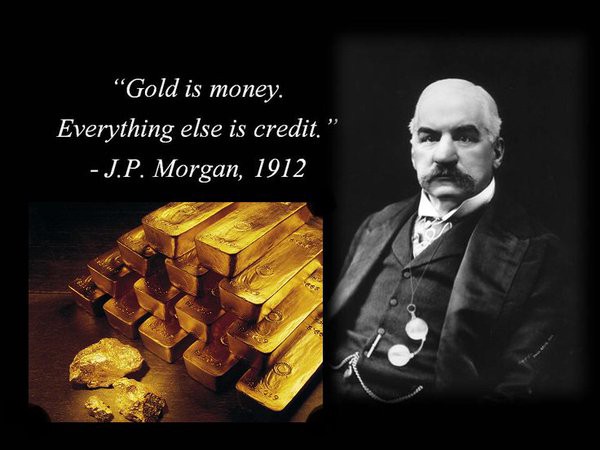 From the OG Banker himself…Jamie should take a leaf from him.. In fact, it’s because it DOESN’T change, that it’s valuable.
From the OG Banker himself…Jamie should take a leaf from him.. In fact, it’s because it DOESN’T change, that it’s valuable.
By the way; it also has a market capitalization (network value) of more than $7T — and more importantly, it took 5000yrs to get there! Bitcoin has thus far become the default digital store of value, because it is censorship-resistant money, with sovereign-grade protection ; designed to withstand an attack by a large nation-state. Bitcoin’s first and most important use-case will be to become a reserve asset. Security and censorship resistance are the fundamentals. Digital currencies already have the rest of the attributes. Over time, as long as the fundamentals hold true, their adoption will grows, and so too will their network value, thus giving them a real shot at being real mediums of exchange.
It’s not an “if” — it’s a “when”
Because time and history is always on the side of “Networks”.
Which brings me to the next point:
Networks
NOBODY has ever successfully predicted the growth of any network that’s had a significant impact on society (that may be an exaggeration, but you get my point). The most important & entrenched networks, such as:
- Electricity
- The Telephone
- The Internet
- Money & Value Exchange
Nobody saw any of those coming, nor predicted their growth.
My favourite part of looking back on the growth of each of these networks is reading these quotes:
“The truth is; no online database will replace your daily newspaper, no CD-ROM can take the place of a competent teacher and no computer network will change the way government works.” American astronomer and author Clifford Stoll, 1995 “The Americans have need of the telephone, but we do not. We have plenty of messenger boys.” Sir William Preece, Chief Engineer, British Post Office, 1878.
“This ‘telephone’ has too many shortcomings to be seriously considered as a means of communication. The device is inherently of no value to us.” A memo at Western Union, 1878 (or 1876). “When the Paris Exhibition [of 1878] closes, electric light will close with it and no more will be heard of it.” Oxford professor; Erasmus Wilson
and one of my favourites:
“The growth of the Internet will slow drastically, as the flaw in ‘Metcalfe’s law’ becomes apparent: most people have nothing to say to each other! By 2005 or so, it will become clear that the Internet’s impact on the economy has been no greater than the fax machine’s.” Paul Krugman,winner of the Nobel Prize in Economics, wrote in 1998. The same has been true for Bitcoin, since the early days (see Bitcoin Obituaries for some laughs), or this one I picked up from Wired Magazine: “Wired, Tired, Expired for 2012: EXPIRED — Bitcoin” Complete Air Swings — All Around. But in their defence, there is a reason why this happens. There’s a reason why very very smart people get these predictions very very wrong:
Linear VS Quadratic / Exponential Growth.
The human mind has developed over hundreds of thousands of years to think & perceive linearly.
Out in the Savannah, when you’re running from a lion, you need to be aware of how quickly you can outrun it — or you’re dead! Linear thought is a survival mechanism: 30 steps = 30m.
Another 30 steps = 60m all up. Linear.
Exponential Growth is on the other end of the spectrum. It’s a doubling at each step.
An example we’ve all heard of is Moore’s Law, which states that the number of transistors in an integrated circuit doubles roughly every 2yrs.
Tech has followed this trajectory very closely over the past 70yrs and is a big reason why we’ve been wrong (as a society) on just about every prediction we’ve made.
It’s non-intuitive growth:
30 linear steps = 30m.
30 exponential steps = 1bn metres!
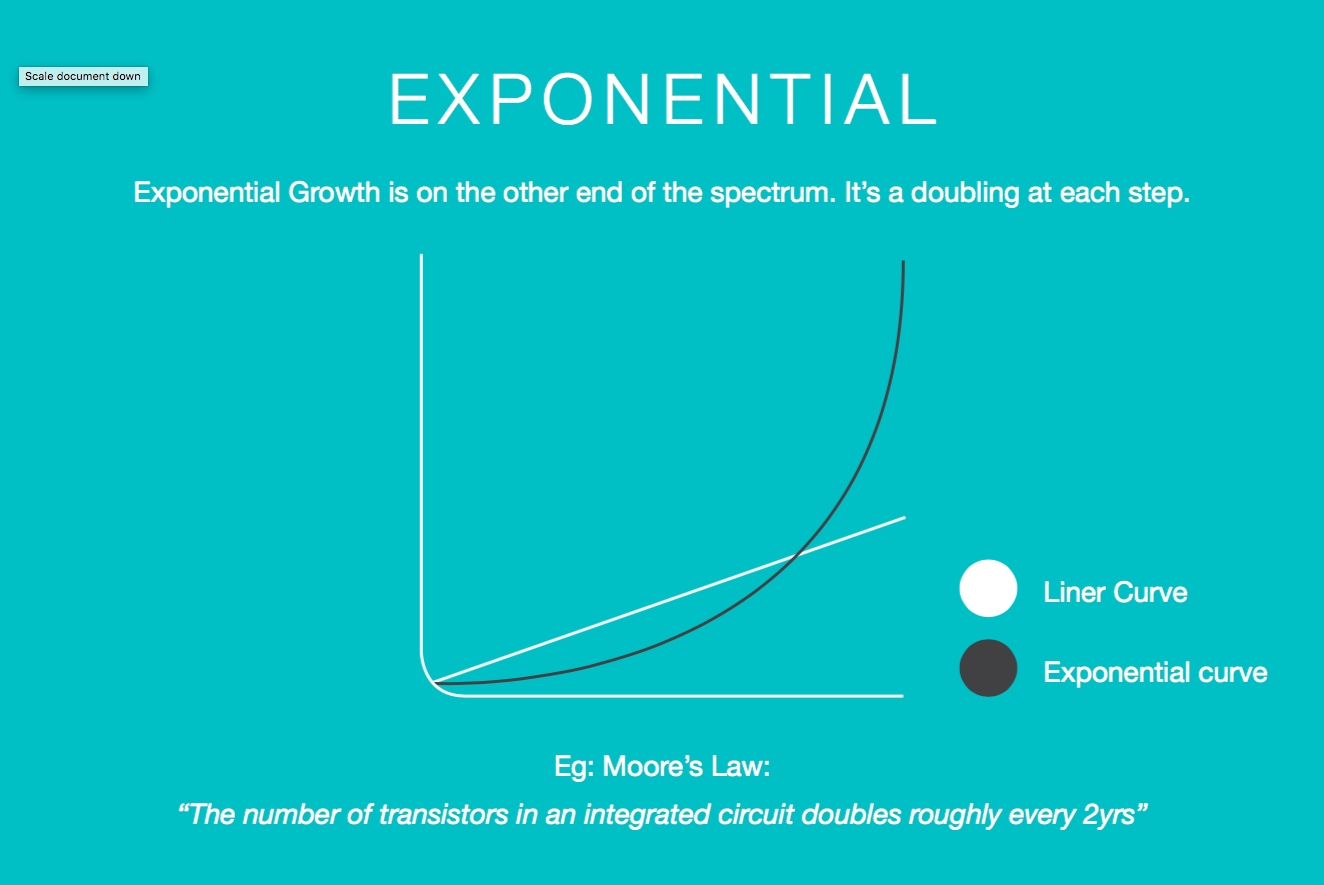
It’s deceptive. We initially over-estimate, and subsequently underestimate. Quadratic growth is not the same, but somewhere in between. It’s best described by Metcalfe’s law, which states that:
“the number of potential connections in a network is proportional to the square of the number of participants, ie; n2”So if there is 1 person in the network, there is one connection.
10 = 100 connections
100 = 10,000 connections
1000 = 1m connections
1m = 1,000,000,000,000 connections
 Simple Representation of Metcalfe’s Law.
Simple Representation of Metcalfe’s Law.
Neither economists, nor bankers, nor astronomers, nor any of us can really fundamentally grasp this. It’s not in our DNA to do so, and to add to that, most of the training in traditional disciplines is built around linear, local concepts — so it further conditions us away from how technology & networks grow.
Now here’s an interesting thought:
Bitcoin & real public blockchain networks are a combination of BOTH Quadratic Network Growth & Exponential Technological Expansion.
That only happens once in a while…
In fact, the last time something so big happened was arguably the Internet (although you could probably argue AWS and Facebook are good examples too, I would say the internet is more akin to Bitcoin because they’re both more like utilities than companies), and despite hoe much it’s changed the world so far, we’re just scratching the surface of what’s to come.
Networks VS Companies
With that basic overview of how Network growth works, let’s explore why we’re getting valuations completely wrong. Networks are fundamentally different to companies traditional capital infrastructure models. The mental models we’ve developed over the last 100yrs to measure & analyse capital, markets, corporations, cooperatives & more don’t fit with the laws that govern Networks. Networks are not companies. They don’t have to worry about profit, loss, shareholders, a board, customers or ANY of that.
Think back to the dot com bubble for a moment. Do you remember what happened?
Web companies boomed & busted, but the internet continued to grow. In fact, it accelerated!
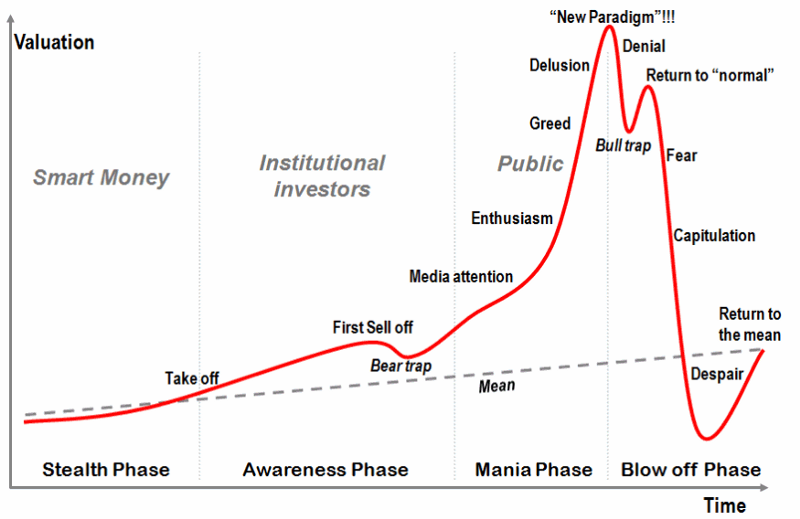 Red = Web Companies. Dotted Line = Internet. Same will be true for Crypto & Bitcoin.
Red = Web Companies. Dotted Line = Internet. Same will be true for Crypto & Bitcoin.
The companies built on the internet were affected, but the underlying network (the internet) was not.
We’ve been trained & conditioned to value things based on profits, earnings, revenues, customers, margins, returns on investment, capital allocation, etc.
Networks are just not subject to the same valuation models & hence we can’t predict what their future value will look like.
Networks have time on their side. Time is usually against you in the corporate world because you’re fighting for market share, fighting for mindshare, fighting the competition, fighting the new startups.
With something like Bitcoin, apart from a catastrophic failure, the fact that new technologies come & go doesn’t really mean much.
Bitcoin (as a protocol) is stable. Bitcoin has infrastructure. Bitcoin has security. Bitcoin is the most decentralized thing we have. Bitcoin has no “head of the snake” and is thus the most censorship resistant. Bitcoin is a freak accident with massive Network effects in play and as a global, digital, neutral, censorship resistant store of value is orders of magnitude ahead of anything else.
So the question you should be asking when trying to evaluate this space is not; “How good or valuable is the technology today”, but;
“How will it evolve over time? Does it have a foundation? and How valuable is a decentralized, digital means of exchange that is scarce, secure, censorship resistant, open, public, transparent & divisible, that allows people all over the world to transact value instantly, freely (cheaply) with anyone at any time”?
It’s a very different question, that requires a new framework and a whole new set of mental models in order to measure and evaluate. Chris Burniske is doing some fantastic work in this space, as is Brian Koralewski.
4bn Unbanked or Underbanked
Before I bring this home, I’ll outline an example I used at one of my talks. Nope, this is not my version of the creepy “babies are dying” that Roger Ver keeps referring to..
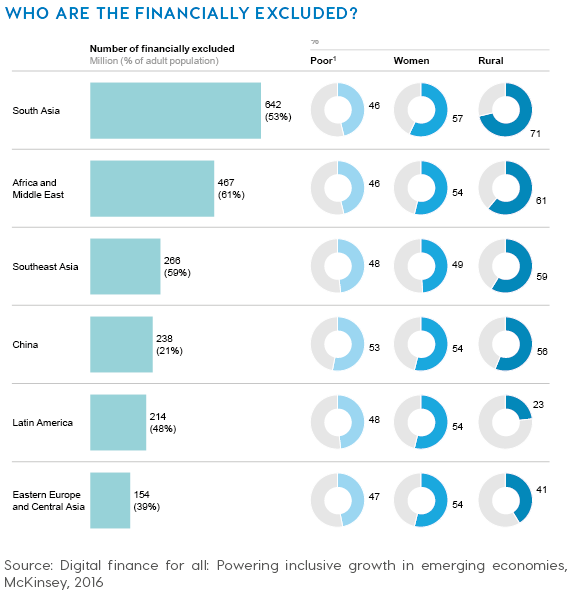 Combining banked & underbanked, we get to roughly 4bn (or more).
Combining banked & underbanked, we get to roughly 4bn (or more).
One of Bitcoin’s major use cases is banking the unbanked, which if successful will probably result in de-banking the banked. Let’s explore: You may have heard of “The Rising Billion” That’s 1bn people crossing the traditional “poverty” line and entering the global economy.
Exponential Technology is already bringing them the tools they need to participate. Smart Phones, Wireless Internet, etc.
But what about banking & financial services? Well; the banks cannot & will not service them because banks are companies They need to make money & there is NO money to be made out there…yet.
Open, public, decentralised protocols (networks) do NOT have that issue.
Bitcoin doesn’t care who you are, where you are, how much you have or why you want to use it.
With a phone & internet access the unbanked will have the basic financial services that we in the “developed” world currently take for granted — and in fact, probably better because they won’t have to sell their privacy and souls to get access.
By the time banks catch up & try to service these 4bn people, it will already be too late.
Why the hell would anyone subject themselves to the rigor, discrimination & constraints of traditional banking when they’ve got something so much better?
How do you think the rest of us are going to feel when we’re leapfrogged?
How do you think this will impact the world?
What does 1bn people do to the value of a Quadratic Network?
I’ll let you do the Math.
Looking Ahead. What comes after Money?
Progressive societies, once they’ve worked out money, go on to build new governance structures and further layers of communication and exchange.
They begin to ask the question of “how we can run society better”?
And this is where things get interesting.
Where in a world now where a communication & information infrastructure has brought the first wave of massive change, and we’re at the dawn of the value transfer & exchange layer atop it.
What happens after that will be transformations in the key pillars of:
Equity, Morals, Liberty, Opportunity, Innovation, Identity, Sovereignty, etc.
We have 2000 digital currencies today, with probably only 5 that will survive long term — because the other 1995, apart from a large proportion being just naive & stupid (or scammy), just don’t need their own infrastructure and the ideas they represent are just way too far away. They are simply not required any time soon because money / value needs to be sorted out first, followed by the key pillars listed above.
After all of that’s done (which will take many years) we will see layers abstraction on top of those, where millions of applications will be developed that function better in a world operating on a more modern, decentralized form of value exchange, governance, identity, etc.
Note that there will also be a million applications that run better in their current centralized format — not everything with Blockchain at the end of it is better. In fact, much of it is worse!
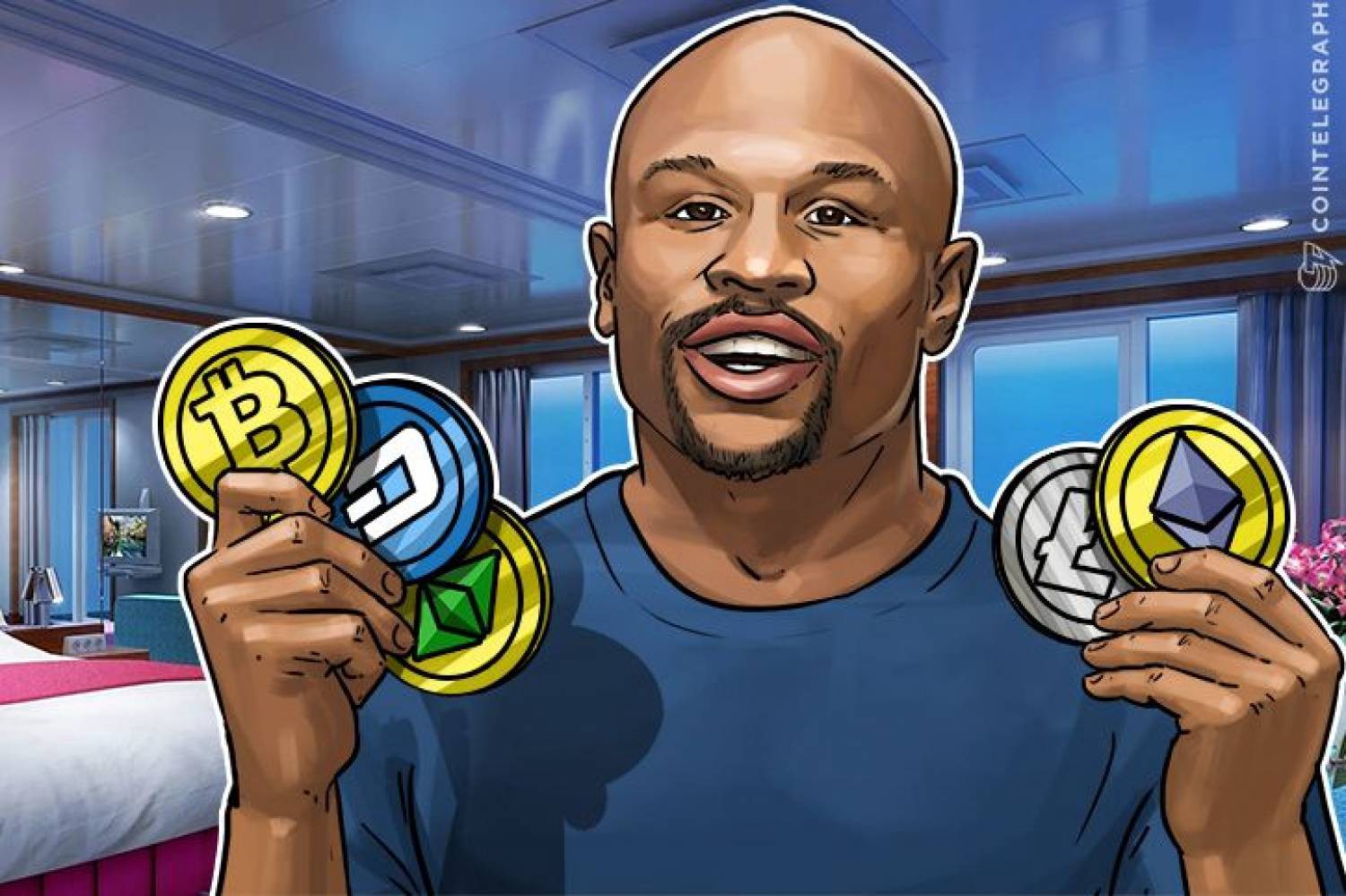 What the actual fuck….
What the actual fuck….
But, the foundational elements of society, ie; Value Exchange, Governance, Identity are where all of the real innovation will happen in the space.
Our job is to get the base layer right first — all else comes after.
Adoption → Value → Stability
In order for this experiment to succeed, I believe we need to do the following:
- Increase Adoption, and as a result;
- Increase the Network Value (Store of Value / Reserve Asset), and as a result;
- We will see this asset class stabilize, and then, because of it’s utility, it will have a chance at being a global, open, public, instant, decentralized form of value exchange (ie; Money).
What’s most important now though, is we need to place our effort in (1).
2 and 3 will happen as a result of increasing adoption.
So how do we do that? Simple (but not necessarily easy):
a) Better on-ramps & off-ramps.
We simply need to create better exchanges & better ways for people to get into the space. There is NO better way for someone to learn about this new technology than to actually buy some.
b) Better infrastructure.
This includes wallets, nodes, lightning nodes, tools such as Metamask, etc. Once people are “in” the space, they need to have a better experience. Wallets, for example, have come a long way — but they have a long way yet to go.
c) Education.
All nascent industries that “boom” bring with them the cowboys & snake oil salesman, in droves. You see crap like Bitconnect, USI Tech, Mayweather, Steven Seagal, Ai Blockchains that will solve world hunger & clean your house, dentist coins, and god knows what other horse shit come out of the woodwork and you wonder how any of this is even legal..
Well — most of it isn’t — and most of it is short term noise which will all disappear in the next “crypto winter” (overdue, but much needed).
But it’s up to us as the people who understand “something” about this space to educate and explain things to the rest of the populace in ways that make sense — which I know is not easy. To this day, after years of studying, there is still no simple 1 liner that explains WTF Bitcoin or Blockchains are without opening up a pandora’s box of further questions..But, we’re getting there.
In that vein, here is a quick list of people you should follow / subscribe to if you want to learn more:
- Andreas M. Antonopoulos
- Naval Ravikant
- Jimmy Song
- Trace Mayer
- Kyle Samani
- Chris Burniske
- Yannick Roux
- TwoBitIdiot
- Giacomo Zucco
- Saifedean Ammous
- Tuur Demeester
- Nassim Nicholas Taleb
There’s more, but this is a quick list off the top of my head.
Closing Thoughts
My hope is that this slightly prolonged article gives the reader a good foundational understanding of why Bitcoin exists, why it’s important, why it’s probably not going away, and why “history” is now on a different trajectory than it was before.
And maybe that understanding will make you realise what all the hype is about. Because despite the scammy ICO’s and stupid money flying around, there actually is some real stuff here worth being excited about.
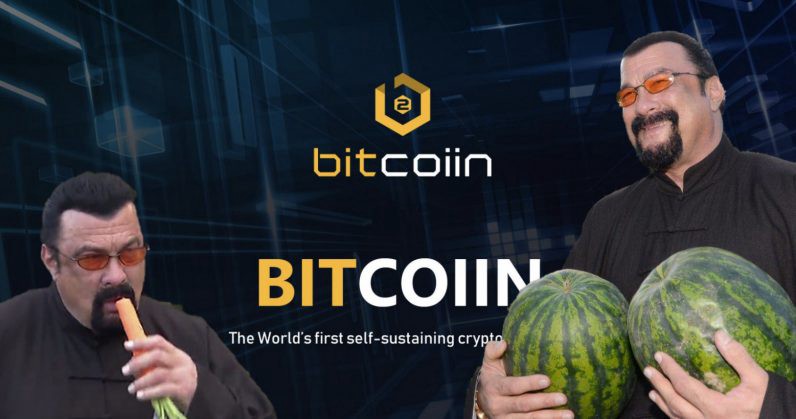 Last one..I promise…I don’t even know if this is real…but FML…
Last one..I promise…I don’t even know if this is real…but FML…
NOTE:
Some might construe me as a “bitcoin maximalist” after reading this article, and…..well that’s partially true:
When it comes to money, what I am interested in is the most decentralized, censorship resistant store of value and subsequent opportunity for medium of exchange that will form the basis for value measure and transfer in the future. And currently, based on the research I’ve done over the years — not just on blockchains, but on societal evolution, the history of money, the history of humanity, etc — Bitcoin stands head and shoulders above the rest as the one with the most viable chance of success.
Bitcoin’s value proposition is not digital currency (yet) — 90% of existing money already exists as digital currency; Bitcoin’s value proposition is its methodology in guaranteeing the trustworthiness of digital currency. I think there is scope for a different set of protocols to be optimised for a different set of use-cases — which in my mind is a good idea, ie; use the best tool for the job. And that will likely happen. Bitcoin should do SoV + money + reserve asset layer / secure global network and do that best. (It’s the most contentious anyway so it’s big enough problem to solve as it is).
Lastly, I want to be clear that my aim with the article was to present the conclusions I’ve come to thus far, based on what I’ve managed to procure & distill. I’m sure there is more out there and as things progress, so too will my opinion.
Note that this could’ve gone a hell of alot longer, but seeing as though I have a company to build, I need to go do some work, so: Whether you buy some Bitcoin through the application I’m involved in at www.getamber.io or any other exchange, it doesn’t matter.
What matters is that we ADOPT this new technology, and spread the word.
Buy some Bitcoin. Be a user, be a “node” — and the network will grow faster than any of us could’ve ever imagined.
Thankyou.